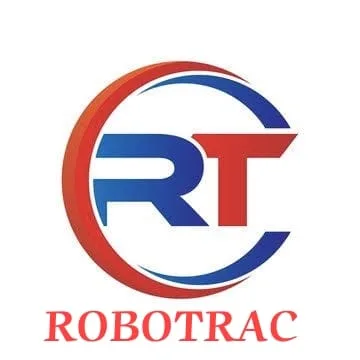Empowering Farmers: A Deep Dive into Smart Agriculture Equipment
The agricultural landscape is undergoing a transformative shift. Gone are the days of solely relying on traditional methods. Smart agriculture equipment, powered by cutting-edge technologies like Artificial Intelligence (AI) and robotics, is here to empower farmers and revolutionize the way we cultivate our crops. This comprehensive guide will delve deeper into this exciting realm, explaining how smart equipment can enhance your farm’s efficiency, optimize yields, and empower you to make informed decisions for a more sustainable and profitable future.
Table of Contents
Unveiling the Powerhouse: Key Smart Agriculture Equipment
Let’s explore some of the game-changing smart equipment transforming the agricultural industry:
- Robot Tractors: These autonomous marvels utilize Global Positioning Systems (GPS) and sophisticated sensor technology to navigate fields with unmatched precision. Imagine a tractor diligently planting seeds or meticulously spraying fertilizer, all while you monitor its progress from the comfort of your smartphone. Robot tractors not only reduce human error and operator fatigue but also pave the way for 24/7 operations, maximizing productivity. Companies like [research and replace with a relevant company selling smart tractors in your region] are leading the charge in this domain.
- AI-powered Tools: The magic lies in data! Smart equipment collects real-time data on crucial aspects like soil conditions, moisture levels, and crop health. This data is then fed into powerful AI algorithms that analyze it and provide actionable insights. By leveraging these insights, you can make data-driven decisions about irrigation, fertilization, and pest control. This targeted approach optimizes resource use, minimizes waste, and ultimately leads to higher yields.

Here are some specific examples of AI applications in agriculture:
- Mini Tractors and Power Tillers: These compact and versatile machines are ideal for smaller farms or specialized tasks. The beauty lies in their adaptability. Many mini tractors and power tillers can be equipped with smart features like precision seeding technology and fertigation systems (integrated fertilizer application with irrigation), allowing you to achieve impressive results on a smaller scale.
- Smart Seed Drills: Gone are the days of manual seed planting. Smart seed drills utilize advanced technology to precisely plant seeds at the optimal depth and spacing. This ensures uniform germination, maximizes yields, and minimizes seed waste. These drills often integrate seamlessly with tractor automation systems, further streamlining the planting process.
Unveiling the Benefits: Why Embrace Smart Agriculture Equipment?
The advantages of incorporating smart equipment into your agricultural practices are multifaceted and far-reaching:
- Enhanced Efficiency: Automate repetitive tasks like plowing, planting, and spraying, freeing up your valuable time for other crucial farm management activities. This allows you to focus on strategic planning, marketing, and overseeing the overall operation of your farm.
- Optimized Yields: Data-driven decision making empowered by AI tools leads to better resource management. By providing precise insights into crop health and environmental conditions, smart equipment enables you to tailor your approach and maximize crop yields.
- Reduced Costs: Smart irrigation and targeted fertilizer application minimize water and fertilizer waste, leading to significant cost savings. Additionally, the efficient use of fuel by autonomous equipment translates to further cost reduction.
- Sustainable Practices: Smart irrigation promotes water conservation, a critical factor in today’s world. Furthermore, targeted pesticide application minimizes environmental pollution and promotes ecological balance.
- Improved Labor Management: Smart equipment alleviates the burden of physically demanding tasks, potentially reducing your reliance on manual labor. This can be especially beneficial in regions facing labor shortages or an aging agricultural workforce.
Embracing the Future: How to Get Started with Smart Agriculture Equipment
The world of smart agriculture is no longer a futuristic vision; it’s a tangible reality. Here are some practical steps to get you started on your journey toward a smarter and more profitable farm:
Embracing the Future: How to Get Started with Smart Agriculture Equipment (continued)
- Research and Education: Familiarize yourself with the different types of smart equipment available and their functionalities. Resources like agricultural publications, industry websites, and university extension programs offer valuable insights and unbiased comparisons.
- Assess Your Needs: Evaluate your specific farm’s requirements. Consider factors like farm size, crop type, budget constraints, and existing infrastructure. This will help you determine which smart equipment solutions would be most beneficial for your operation.
- Start Small: You don’t have to overhaul your entire farm overnight. Consider incorporating a single piece of smart equipment, like a precision seed drill or an AI-powered irrigation system, and assess its impact before making larger investments.
- Seek Expert Advice: Consult with agricultural equipment dealers, extension agents, or experienced farmers who have already adopted smart technologies. Their practical knowledge and insights can be invaluable in guiding your decision-making process.
- Consider Connectivity: Ensure your farm has adequate internet connectivity to support the data transmission needs of smart equipment. Several companies offer specialized connectivity solutions for rural areas.
- Embrace Training: Most smart equipment providers offer training programs to familiarize farmers with the operation and maintenance of their products. Invest in this training to ensure you get the most out of your smart equipment investment.
- Financing Options: Explore financing options available for purchasing smart equipment. Government grants, agricultural loans, and equipment leasing programs can help make these technologies more accessible.

Unveiling the Challenges: Potential Roadblocks and Considerations
While smart agriculture offers a plethora of benefits, it’s important to acknowledge some potential challenges:
- Initial Investment Costs: Smart equipment can be expensive compared to traditional machinery. However, the long-term benefits like increased yields, reduced costs, and improved efficiency often outweigh the initial investment.
- Technical Expertise: Operating and maintaining smart equipment might require some technical knowledge. Training programs and readily available technical support can help bridge this gap.
- Data Security Concerns: Smart equipment generates a significant amount of data. Ensure you choose equipment providers with robust cybersecurity measures to protect your valuable farm data.
- Potential Job Displacement: Automation through smart equipment might lead to job displacement in the agricultural sector. However, these technologies can also create new opportunities in areas like data analysis, equipment maintenance, and technical support.
The Road Ahead: A Brighter Future for Agriculture
Smart agriculture equipment represents a paradigm shift in the way we cultivate our crops. By embracing these innovative technologies, farmers can unlock a world of possibilities, leading to increased efficiency, optimized yields, and sustainable practices. As research and development continue to advance, we can expect even more sophisticated and user-friendly smart equipment solutions to emerge. The future of agriculture is undoubtedly smart, and the time to embrace this exciting transformation is now!

